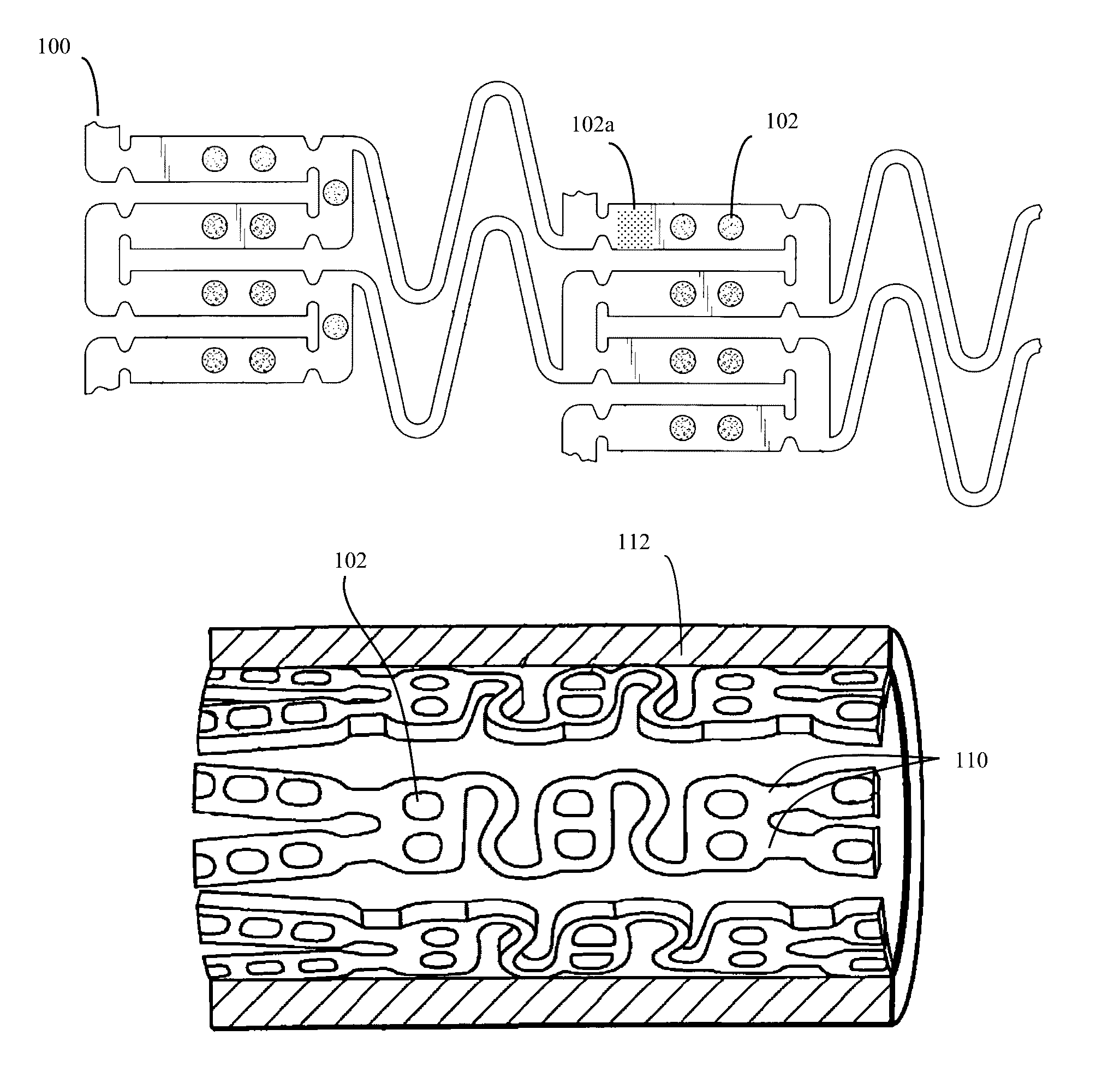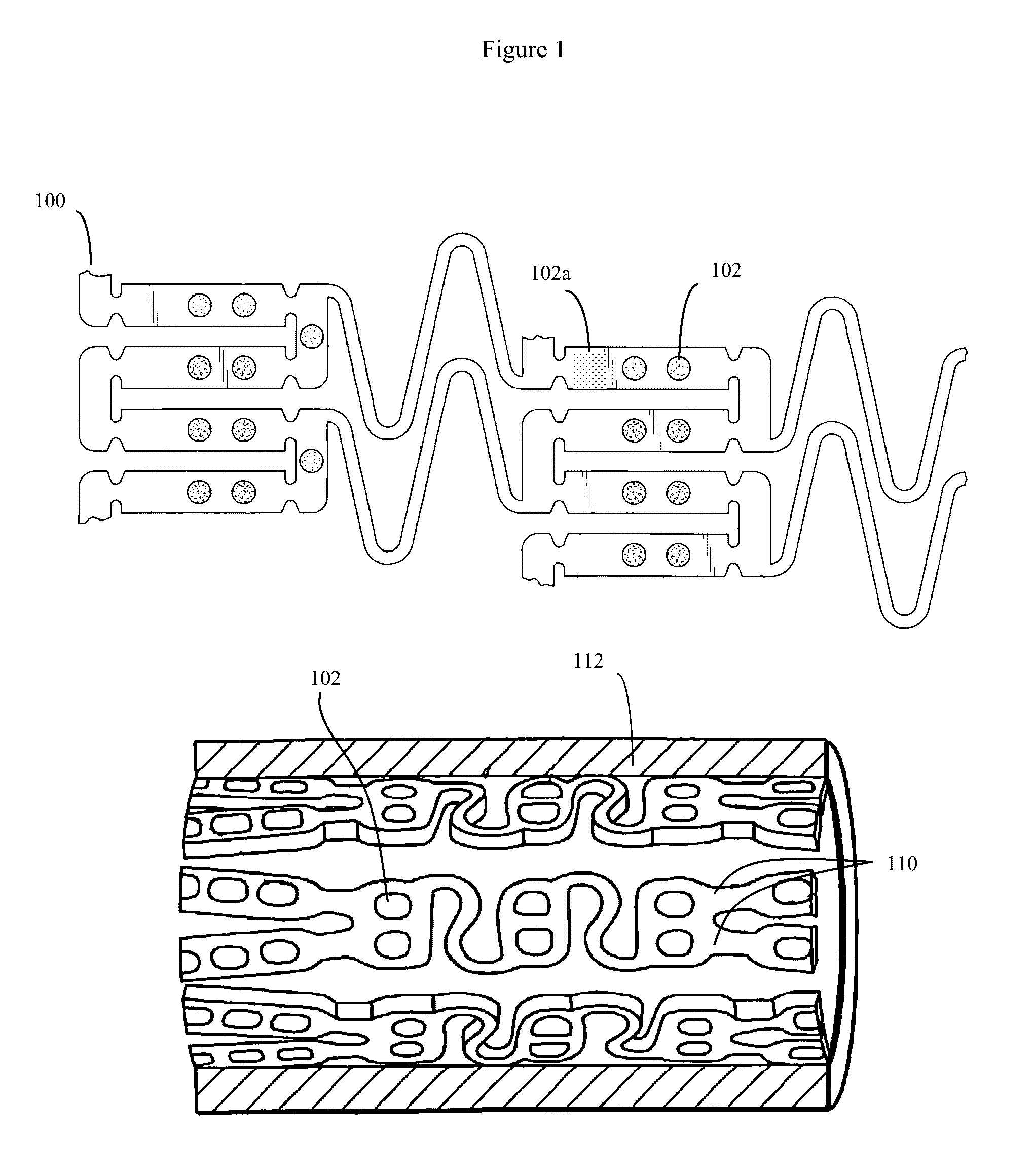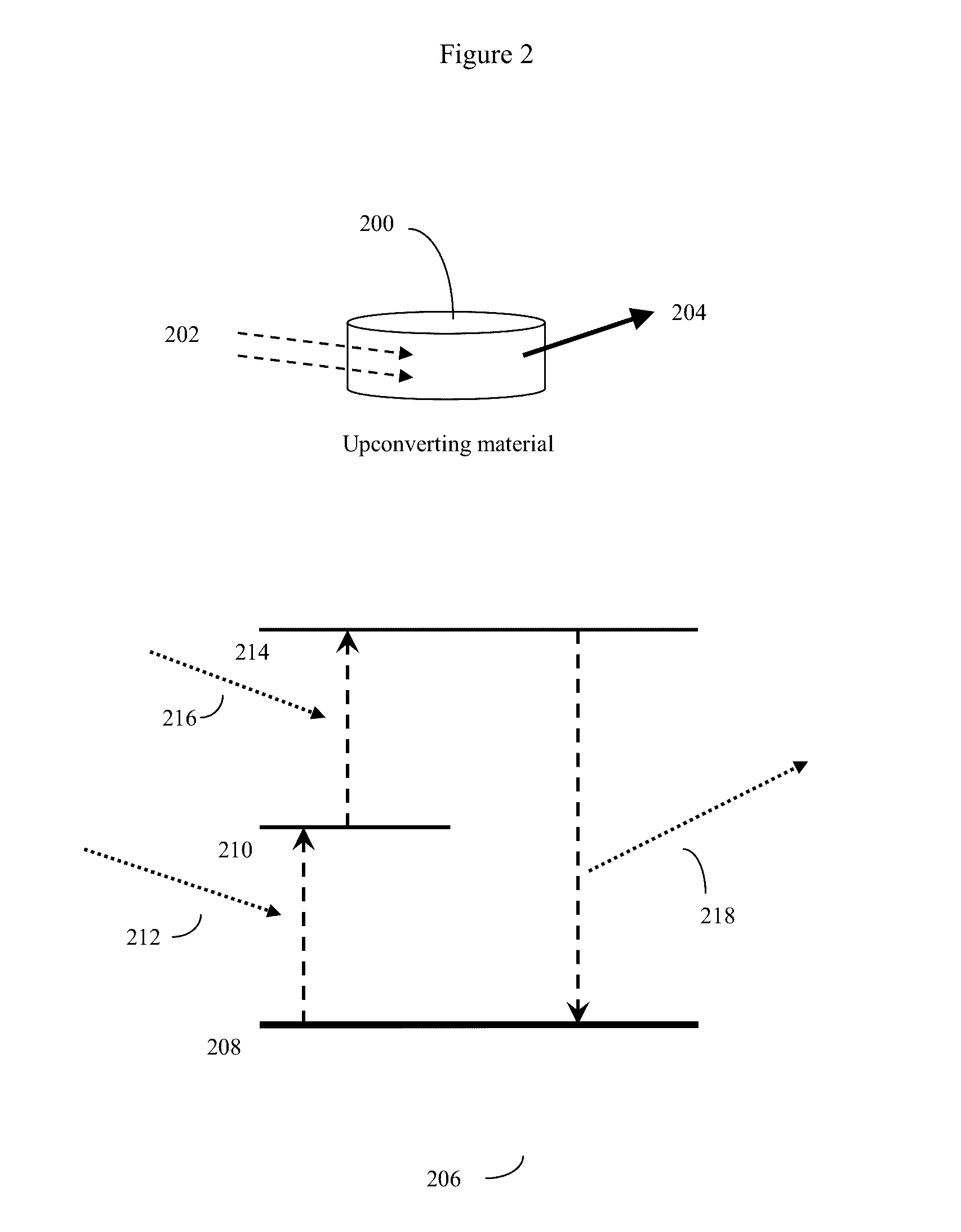Photon upconverting implantable medical devices
a medical device and photon technology, applied in the field of photon upconverting implantable medical devices, can solve the problems of blocked circulation, damaged inner wall of the artery, unwanted cell proliferation and hyperplasia, etc., and achieve the effect of reducing the amount of inflammation or arthritis
- Summary
- Abstract
- Description
- Claims
- Application Information
AI Technical Summary
Benefits of technology
Problems solved by technology
Method used
Image
Examples
Embodiment Construction
[0041]Although throughout this disclosure, occasionally stents and catheters will be used as specific examples of implantable medical devices that can be improved by the use of the disclosed active material. However it should be understood that these examples are simply provided for ease of conveying the basic concept, and are not intended to be limiting in any way.
[0042]Stent applications:
[0043]Some modern stents, such as the stent design of Stanley (U.S. Pat. Nos. 6,565,065 and 7,169,179) (Conor Medsystems) are formed from a deformable material, such as Nitinol (nickel-titanium), other metal or alloy, or other deformable material, and often containing a plurality of small holes. The prior art for such small holes, exemplified by U.S. Pat. No. 7,169,179 is to fill the small holes with therapeutic agents (drugs), often packaged with time release barriers and the like. These therapeutic drugs can then be used to prevent restenosis, thrombosis, or other subsequent unwanted biological ...
PUM
 Login to View More
Login to View More Abstract
Description
Claims
Application Information
 Login to View More
Login to View More - R&D
- Intellectual Property
- Life Sciences
- Materials
- Tech Scout
- Unparalleled Data Quality
- Higher Quality Content
- 60% Fewer Hallucinations
Browse by: Latest US Patents, China's latest patents, Technical Efficacy Thesaurus, Application Domain, Technology Topic, Popular Technical Reports.
© 2025 PatSnap. All rights reserved.Legal|Privacy policy|Modern Slavery Act Transparency Statement|Sitemap|About US| Contact US: help@patsnap.com



